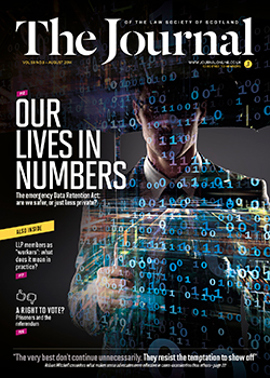Smartcards - the lawyer's friend

What do digital signatures represent?
The implementation of new technologies in the world of law represents a logical and necessary step in the development of the profession, allowing resources and costs to be optimised and offering improved services.
The use of digital signatures in secure devices, such as smartcards, plays a vital role, working in much the same way as a handwritten signature. In Spain, digital identification of lawyers has allowed the profession to present itself as a strong and recognisable group, encouraging the development of digital services that guarantee the identity of lawyers, protect against professional fraud and add value to clients.
To be clear, a digital signature is a “document” in electronic format that allows an authorised organisation, the certification authority, to guarantee the identity of a person. This document – the certificate – is installed in the smartcard and protected by a PIN known only to its owner.
In the Balearic Islands, we issued digital signatures to practising members across three major islands. All our members have now had them for more than six years.
In the end, my experience of this process was positive, in spite of the fact that implementation was a long road and involved some challenges. Any change can cause difficulties; one that implies a new way of relating to your members is harder still, even if it works out in the end. Promoting the new technologies as an aid to solicitors rather than an obstacle has helped to highlight this new world of services and possibilities.
Now, after years of implementation, I remain positive about the use of digital signatures. The feedback from members confirms this, as they are able to carry out a range of procedures online in a more simple and convenient way.
What use does the digital signature have?
Despite its many uses and advantages, the internet is not secure. For instance, many wrongly believe that email is a private means of communication when, in reality, it is extremely simple to intercept and read other people’s messages.
With a recognised digital signature, we ensure identity, confidentiality where information is encoded, and integrity, given that if there is any alteration to the content of the message, the signature ceases to be valid and is rejected. This gives it the same value as a written signature.
Not only does all this work for the sending of electronic communications, but furthermore, it works for authentication in secure environments (management applications, customer relationship management and enterprise resource planning). The digital signature is an indispensable tool if we want to establish a paperless office.
In my case, the principal use made by members is to connect themselves to our electronic management system, enabling them to communicate with us without the need to visit offices personally. Due to the geographical distribution of our members, this is an important benefit. I know from speaking to my colleagues at the Law Society of Scotland that they have similar plans to allow things such as online submission of the accounts certificate.
Through secure access, our members can consult on all matters related to their work in legal aid, actions taken, forthcoming duties, statements of receipts and payments, and even carry out justifications, with everything being presented electronically.
In addition to providing relevance to members, it has offered enormous benefits to the bar association as it now allows lawyers themselves to manage their own affairs, resulting in levels of visibility, transparency and efficiency not possible with a paper-based system.
What can we expect in the coming years?
The future of the smartcard in the European Union depends directly on the uses that are given to it. As it is a highly valuable security tool, it is not unreasonable to think that, to some degree or other, different European courts and government organisations will implement this as a system for authentication and access to their applications.
If, in addition to this, we add the recognition of the legal profession on a European level, we could reach a position where lawyers circulate freely across the EU, accrediting themselves uniquely with their recognised digital signature certificate.
Imagine any EU lawyer being able to appear in any country by merely authenticating themselves with their electronic certificate and, in the years ahead, being able to interact with any entity without having to move around.
This may only be a dream, but I personally believe that any evolution is based on a dream.
In this issue
- Can solicitors be bystanders to offensive language?
- Driving away candidates
- Criminal injuries compensation – the new pitfalls
- Fish farms: a controlled environment
- Still trying to take care of the dead
- Permanence: beyond the past
- A series of unlikely events
- Reading for pleasure
- Opinion: Paul Motion and Laura Irvine
- Book reviews
- Profile
- President's column
- Count of 10
- People on the move
- Your life on file
- Drip, drip, DRIP: privacy draining away?
- LBTT: prepare to switch
- Workers: a class apart
- Dictation has a silver lining
- Don't cross them
- A case to make its mark?
- Variations on a theme
- Child abduction: recent developments
- Whistleblowing update
- Pension changes mean trustee alert
- Scottish Solicitors' Discipline Tribunal
- Changing elitism to equality
- Shape of the future
- Mentors wanted for scheme's second year
- Mandatory PC online renewal is coming for all
- Join wills charity drive
- Law reform roundup
- Carolyn's at the top of her Games
- Smartcards - the lawyer's friend
- With growth there is risk
- Ask Ash
- Smarter money
- Across borders
- Angles on immigration
- Legal aid – the hidden catches






